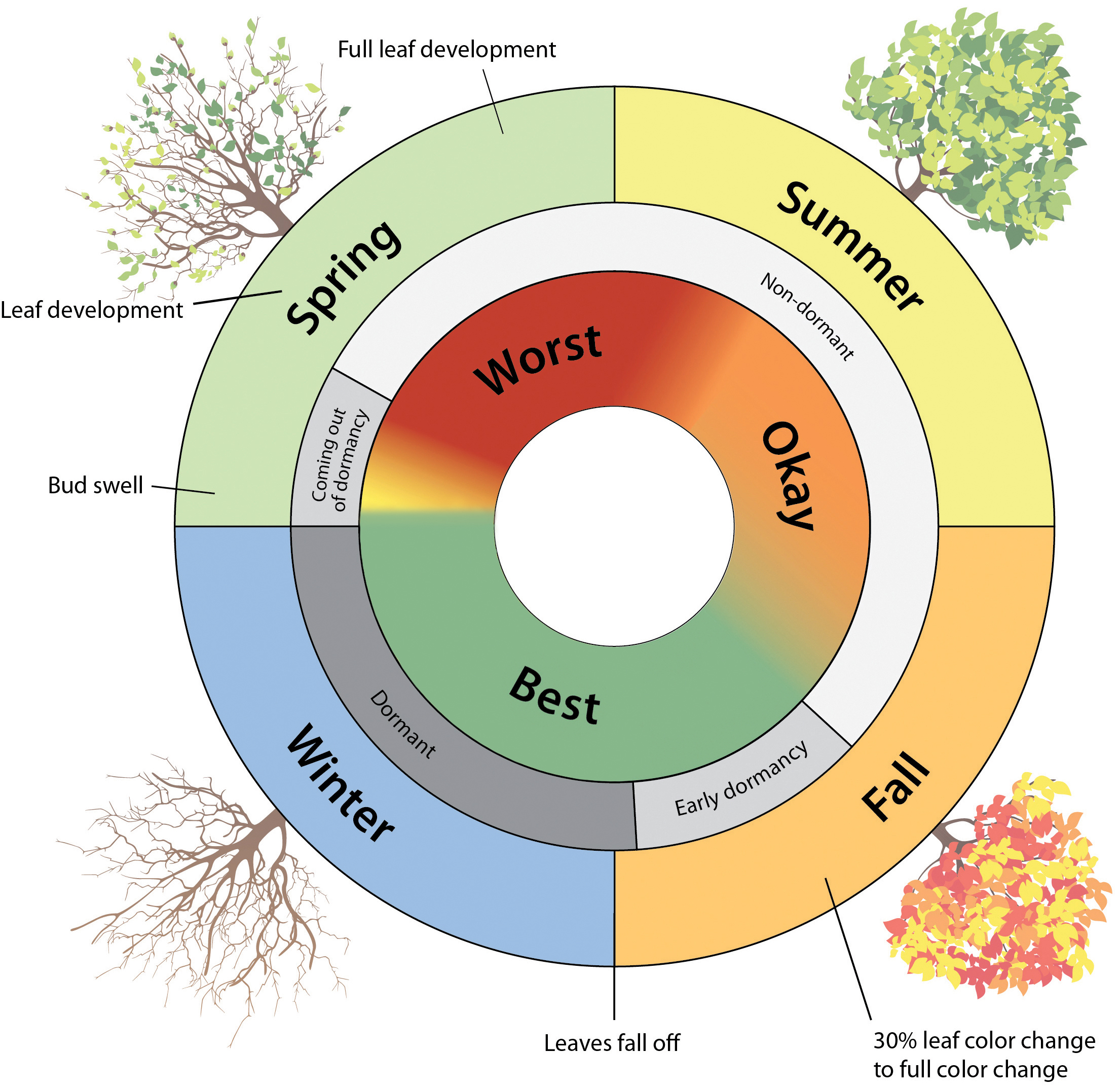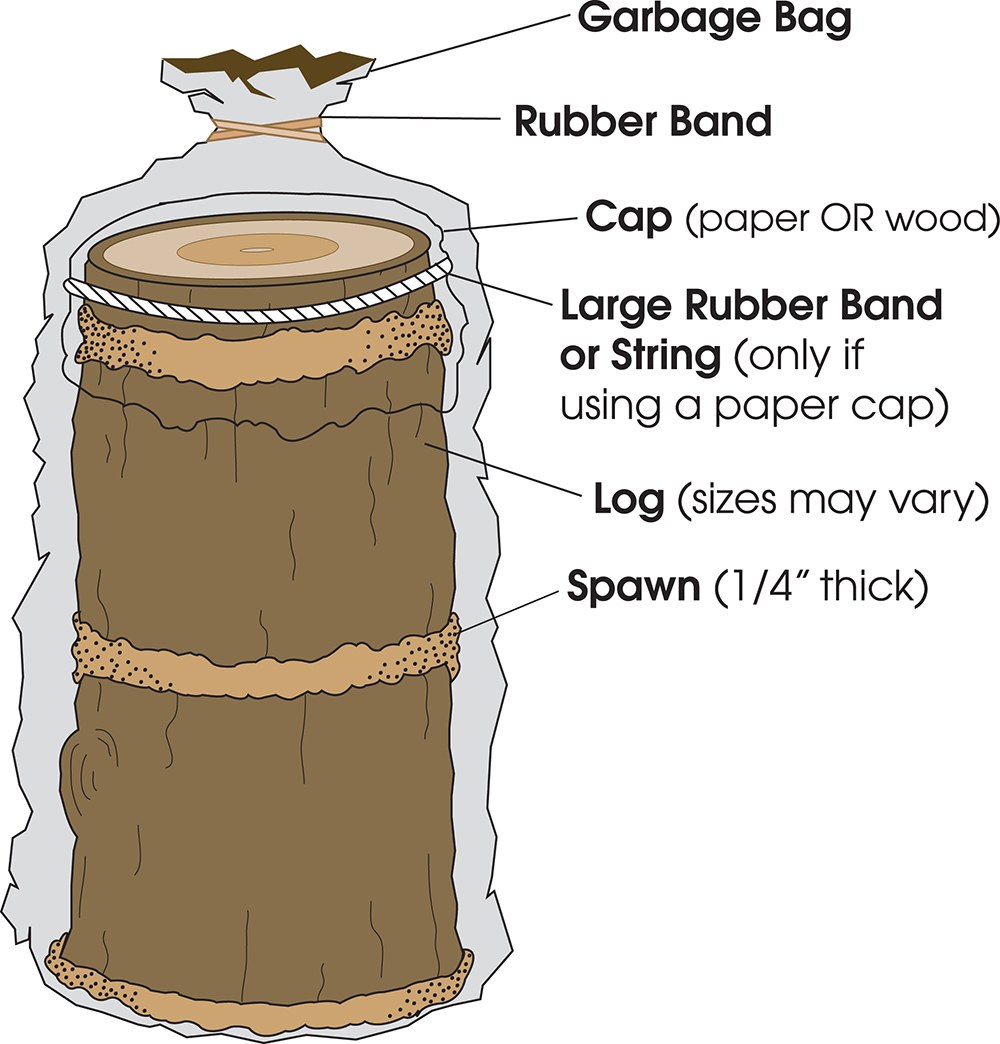On Logs
Growing Mushrooms on Logs
There are many mushroom varieties that grow on logs - Shiitake, Oyster, Lion's Mane, Comb Tooth, Reishi, Olive Oysterling, Nameko, Chestnut, and Turkey Tail. Cultivating mushrooms on natural logs is a wonderful long-term method for mushroom production. A prime Shiitake log can fruit for 8 years or longer!
Important: Not all trees make good mushroom logs. As a general rule, hardwoods are ideal. Different tree species are better for certain mushrooms than others and there are a few recommendations for selecting ideal logs. See the chart below for information on which tree types to use for mushroom cultivation:
Tree Species/Mushroom Suitability Chart
Timing your Log Harvest for Best Results
When do I cut logs for growing mushrooms?
The timing of tree cutting is important. Healthy, living trees without signs of disease should be cut during the dormant season (after the leaves change color in the fall up until the buds swell in the spring) and rested a minimum of 2 weeks prior to inoculating. This allows time for the tree's defense system to dieback. Protect the logs from drying out by storing them low to the ground (but out of the soil and leaf layer), out of the sun and wind, and where they can receive natural rainfall. Logs can be rested until inoculation for longer than 2 weeks, however there is increased risk of contamination and losing vital log moisture beyond 6 weeks.
Dormant Season Cut
Fall cut is best: Wood cells are not hardened and are easily invaded by mushroom spawn, allowing for a fast spawn run. You will need at least 6 weeks (including the two week resting period) of day-time temperatures in the 50°Fs for the mycelium to establish itself within the logs before the winter sets in. Because of this, inoculation is not practical in the North at this time unless logs can be placed in a climate-controlled incubation environment.
Winter - early spring cut logs: The stored nutrient levels in logs are still good, but will decline the closer you get to the trees reaching bud swell/break/leaf out stages.
Non-Dormant Season Cut
Late spring-summer cut logs: Stored nutrient levels in the logs is lower and will result in smaller mushroom crops and shorter log life. Storm damaged wood is often available at this time but we recommend only using wood that comes down in mid-summer or later (see note below).
AVOID cutting logs from the period of leaf-out stage to 4-6 weeks later due to low nutrition in the wood and poor bark retention on the logs.
Want more information? Check out our video: Tree Dormancy: What is it, When is it, and Why is it Important for Mushroom Cultivation?
When can I expect my first shiitake mushroom harvest?
The answer, as will most things nature, is "it depends". But for starters check out our PLANTING AND HARVESTING tab to learn more about the best planting times and when you can roughly expect your first harvest!
How to Inoculate Logs
To inoculate logs you will want to use either plug spawn or sawdust spawn. Logs can be cut to size for either the Drill-and-Fill Inoculation Method using standard sized logs (3-8" diameter x 36-40" length) or the Totem Inoculation Method using larger diameter logs (6-12" diameter x 6-12" length). Please see the instruction sheets for recommendations for planting specific strains.
Sterilized/Treated Logs
Maitake, Chicken of the Woods and Brick Cap also grow on wood logs, however, these varieties grow best when the log is treated prior to planting - either by sterilization, steaming, or boiling. Details for this process can be found in the Maitake and Chicken of the Woods instruction sheets.










